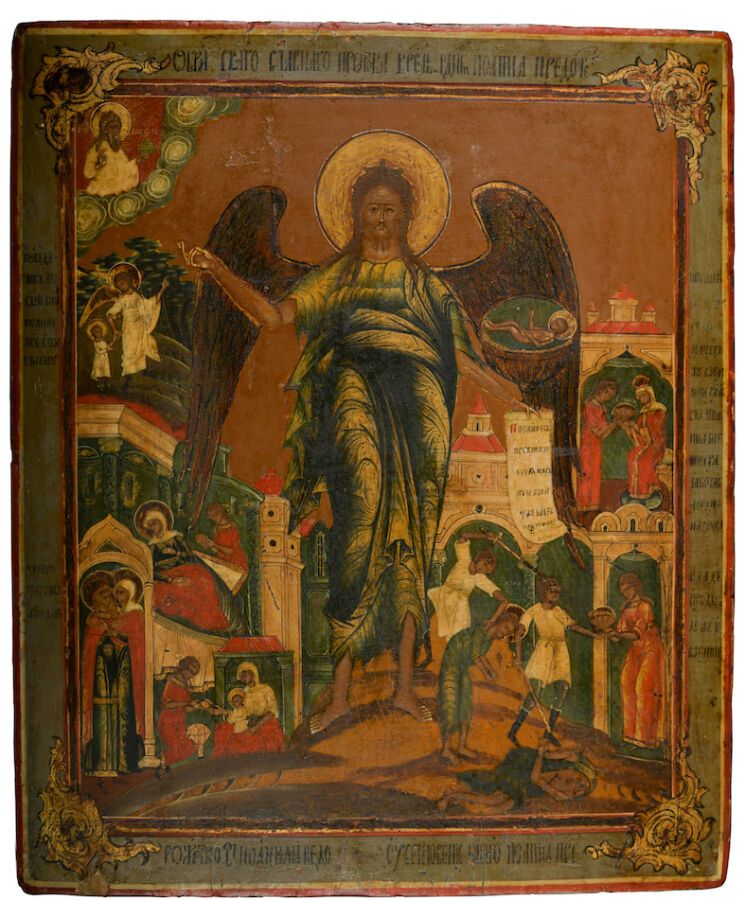Description
Icon. Saint John the Baptist. Russia, Palekh, 18th or 19th c. Tempera on wood. 31 x 26 cm. Depicted in large size, St. John the Baptist is surrounded by scenes from his life and martyrdom; this kind of representation is typical of the workshops of Palekh icon painters.Икона Образ Святого Пророка Крестителя Господня Иоанна Предтечи. Палехские письма. XVIII-XIX вв. Дерево, темпера. 31 х 26 см.
12
Icon. Saint John the Baptist. Russia, Palekh, 18th or 19th c. Tempera on wood. 31 x 26 cm. Depicted in large size, St. John the Baptist is surrounded by scenes from his life and martyrdom; this kind of representation is typical of the workshops of Palekh icon painters.Икона Образ Святого Пророка Крестителя Господня Иоанна Предтечи. Палехские письма. XVIII-XIX вв. Дерево, темпера. 31 х 26 см.
You may also like
